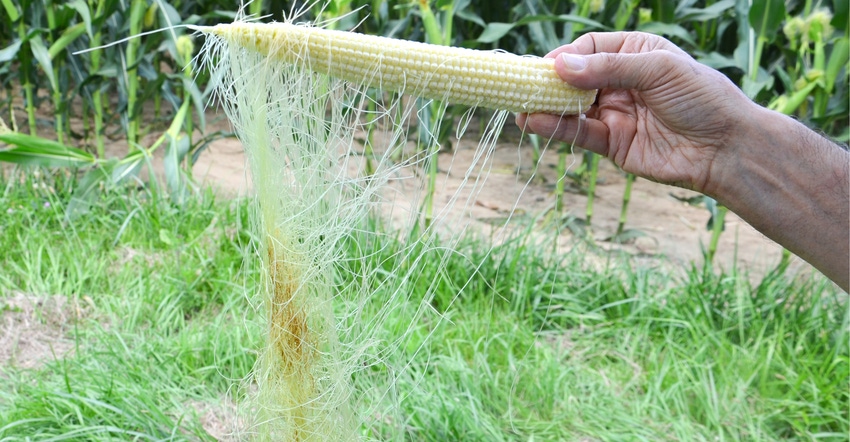May 31, 2019

We always have some Japanese beetles this time of year. How much silk clipping can corn stand before I should spray? If it’s already pollinated, is it too late to help?
The Indiana certified crop advisers answering this question include Jamie Bultemeier, A&L Great Lakes Labs, Fort Wayne; Troy Jenkins, agronomist with Ceres Solutions, Rochester; and Marty Park, Great Lakes Seed Service, Rensselaer.
Bultemeier: The threshold for Japanese beetle clipping of corn silks is when silk length is less than a half inch and less than 50% of the corn is pollinated. If the silks are growing faster than they’re being clipped by the beetles, while corn is shedding pollen, the opportunity for kernel pollination is good. Once the corn is pollinated, there is no need to be concerned with beetles feeding on silks. The silks have already done their job at that point.
Jenkins: Corn silk clipping by corn rootworm and Japanese beetles is always a concern to growers. Corn silks grow on average about an inch per day. Unless the insect clipping is nonstop, day and night, for five continuous days, enough new silk growth will occur to ensure pollination. If clipping is occurring at a rate where a half inch or less of silks remains per day and only 50% pollination has occurred, insecticide treatment is recommended. Once pollination has occurred, insecticide application for these insects will show no great economic benefits.
Park: We typically see the highest Japanese beetle populations and worst silk feeding on edges of the field. Normally as we go farther into the field, Japanese beetle pressure decreases. The rule of thumb for making an insecticide application is silks need to be cut to a half inch or less before 50% pollination has occurred, with beetles present and feeding. I would recommend the “ear shake” method on several ears with the worst silk feeding to see how successful pollination has been. If they’re pollinated, there’s no need to spray.
You May Also Like




